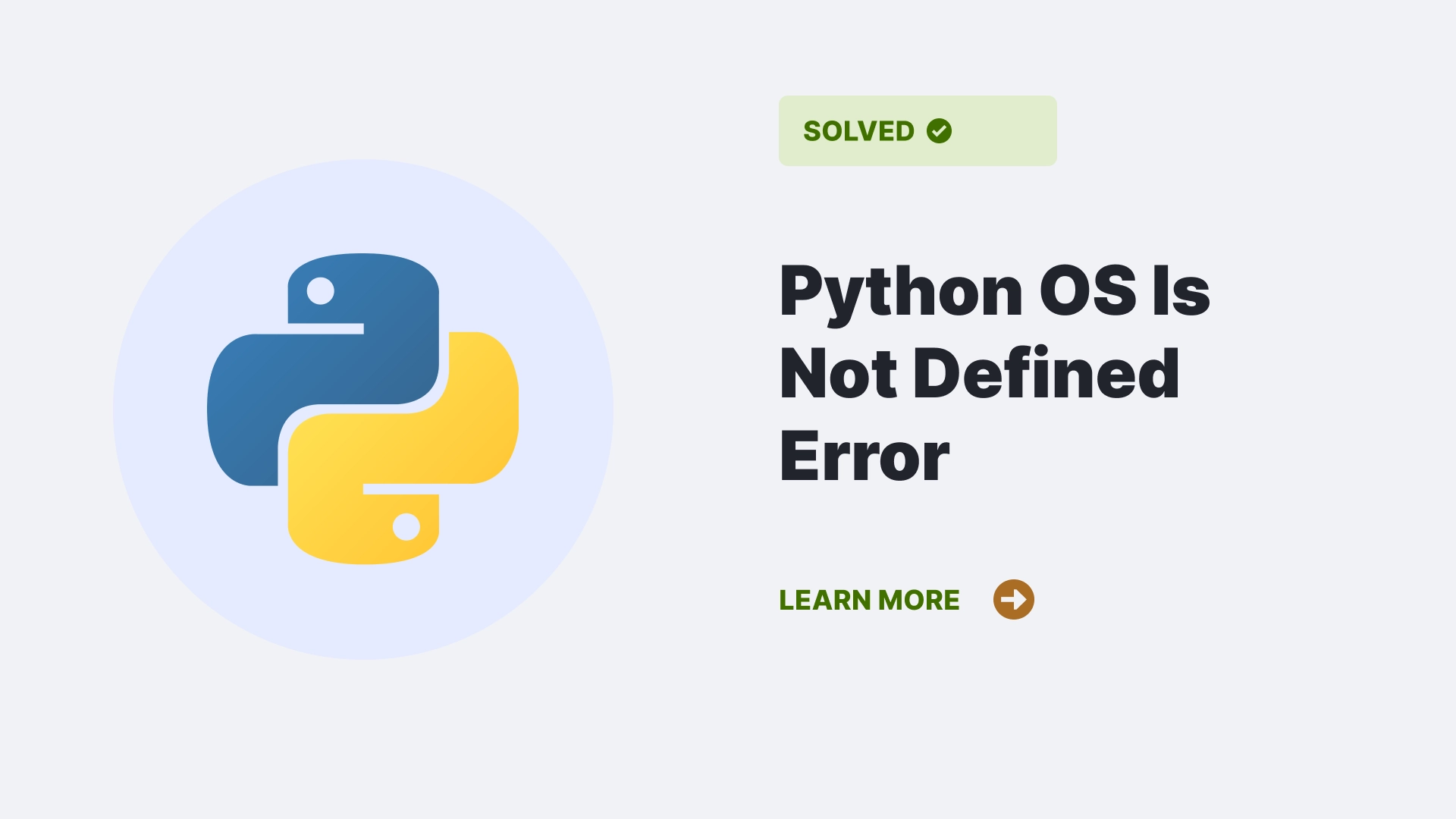The error message NameError: Python OS Is Not Defined typically occurs when we try to use the os module without importing it first. The os module provides a way to interact with the operating system, allowing you to perform various tasks such as file operations, directory navigation, and more.
Contents
Reasons why we get the error Python OS is not defined
If we are encounter the error “NameError: name ‘os’ is not defined” even after importing the os module, there could be a few possible reasons:
- Python Installation Issue: It’s possible that there is an issue with your Python installation or environment. Ensure that you have a valid and functioning Python installation. You can try reinstalling Python or using a different Python environment.
- Module Name Conflict: Check if you have any variables, functions, or modules in your code with the name ‘os’ that might be conflicting with the
osmodule. Make sure you don’t have any variables or functions named ‘os’ that could override the module. - Typographical Error: Double-check for any typographical errors in your code. Ensure that you have correctly spelled ‘os’ when importing and using the module. Python is case-sensitive, so make sure the capitalization matches (‘os’ instead of ‘OS’).
- Python Version Compatibility: It’s possible that you are using an older version of Python that does not include the
osmodule. However, theosmodule is part of the Python standard library and should be available in all recent versions of Python.
If we have ruled out these possibilities and the error still persists, providing more context or sharing the specific code that triggers the error can help in further troubleshooting.
How to resolve the error message for Python OS Is Not Defined
To resolve Python OS Is Not Defined Error, we need to import the os module at the beginning of your Python script or in the Python shell before using any of its functions. The os.getcwd() function is used to get the current working directory, and it is accessed using the os module.
It needs to be made sure that we have the correct Python installation, and the os module is part of the standard library, so you shouldn’t encounter any issues when importing it. Here’s an example of how to import and use the os module:
Syntax:
import os
Now you can use the functions and attributes provided by the os module. The os.getcwd() function is used to get the current working directory, and it is accessed using the os module. For example, you can get the current working directory using os.getcwd():pythonCopy codecurrent_directory = os.getcwd()
current_directory = os.getcwd()Use the imported functions and attributes as needed in your code.
It needs to be remembered that the os module is part of the Python standard library, so it should be available without requiring any external installations. Once the import problem is solved properly, you wont see Python OS Is Not Defined error.
Situations
The os module in Python provides a wide range of functions for interacting with the operating system. Here are some common use cases for the os module assuming the import issue has been resolved:
- File and Directory Operations:
- Create, delete, or rename directories:
os.mkdir(),os.rmdir(),os.rename() - List files and directories in a given path:
os.listdir() - Check if a file or directory exists:
os.path.exists() - Get file or directory information:
os.stat()
- Create, delete, or rename directories:
- File System Navigation:
- Get the current working directory:
os.getcwd() - Change the current working directory:
os.chdir() - Join paths:
os.path.join() - Split a path into directory and file components:
os.path.split()
- Get the current working directory:
- Environmental Variables:
- Access and modify environmental variables:
os.environ - Get the value of a specific environmental variable:
os.environ.get()
- Access and modify environmental variables:
- Process-Related Operations:
- Execute an external command or program:
os.system(),subprocess.run() - Get the process ID of the current running process:
os.getpid() - Terminate a process:
os.kill()
- Execute an external command or program:
- Platform-Specific Features:
- Get the name of the operating system:
os.name - Check if the current platform is Windows:
os.name == 'nt' - Perform platform-specific operations using conditionals
- Get the name of the operating system:
These are just a few examples of the capabilities provided by the os module. It offers a rich set of functions for file operations, directory handling, process management, and more. By utilizing the os module, we can write cross-platform Python code that interacts with the underlying operating system.
FAQs
What is os module in Python?
In Python, the os module is part of the standard library and provides a wide range of functions and constants for interacting with the operating system. It offers a convenient and platform-independent way to perform various tasks related to file operations, directory navigation, process management, environmental variables, and more.
By importing the os module, we gain access to the functionalities that can leverage them to write more powerful and platform-independent Python programs that interact with the operating system.
What is the error ‘Python django os is not defined’?
If we receive an error message stating “Python Django os is not defined,” it means that you are trying to use the os module within a Django project, but the module has not been imported or accessed correctly.
It can be resolved through importing the os module, verifying Django project structure, checking variable scope, restarting the development server.
Conclusion
To summarise, the error “NameError: name ‘os’ is not defined” occurs when attempting to use the os module in Python without importing it first. To resolve this error, we need to import the os module at the beginning of your script or in the Python shell. By importing the os module, we can access these functionalities and perform various tasks related to the operating system in your Python code.
References
More Python Errors here.

